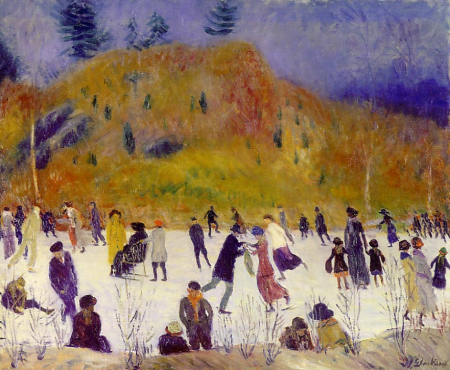Impressionist artist Edward Henry Potthast, born in Cincinnati in 1857, never married and had no children.
[“Coney Island,” 1910]
But this devoted painter who made art his entire life (he even died in his studio overlooking Central Park) seemed to find deep delight in depicting scenes of families, especially young mothers and children, enjoying the sand and surf at the city’s seaside pleasure outposts.
[“Summer Day, Brighton Beach” date unknown]
After studying art in Europe, Potthast permanently relocated to Manhattan in the 1890s, working as an illustrator for monthly publications such as Scribner’s and Harper’s while painting and exhibiting his own work.
[“Saturday Afternoon, Rockaway Beach” 1915]
He lived and worked at the Gainsborough, a building of artists’ studios on Central Park South that opened in 1908. “After his move to New York, Potthast made scenes of people enjoying leisurely holidays at the beach and rocky harbor views his specialty,” states this biography.
[“Manhattan Beach” date unknown]
Although he painted scenes of bright sunny skies and sparkling blue water in out-of-state locales in Massachusetts and Maine, “[s]uch was his love of the beach that, when he resided in New York, he would journey out on fair days to Coney Island or Far Rockaway with his easel, paintbox, and a few panels.”
[“Brighton Beach” date unknown]
While Coney Island and the Rockaways have been popular with painters since these resorts began attracting massive crowds in the late 19th century, Potthast’s beach scenes don’t resemble not the tawdry Coney Island of Reginald Marsh or the foreboding Coney of Alfred Henry Maurer.
[“Brighton Beach” date unknown]
Instead, they show the gentle and genteel side of the city’s beaches in the 1910s—vivid with color, activity, and a dreamy innocence that makes one wish they could be instantly transported there, away from the complexities of contemporary life.
[“Rockaway Beach” 1910]






































